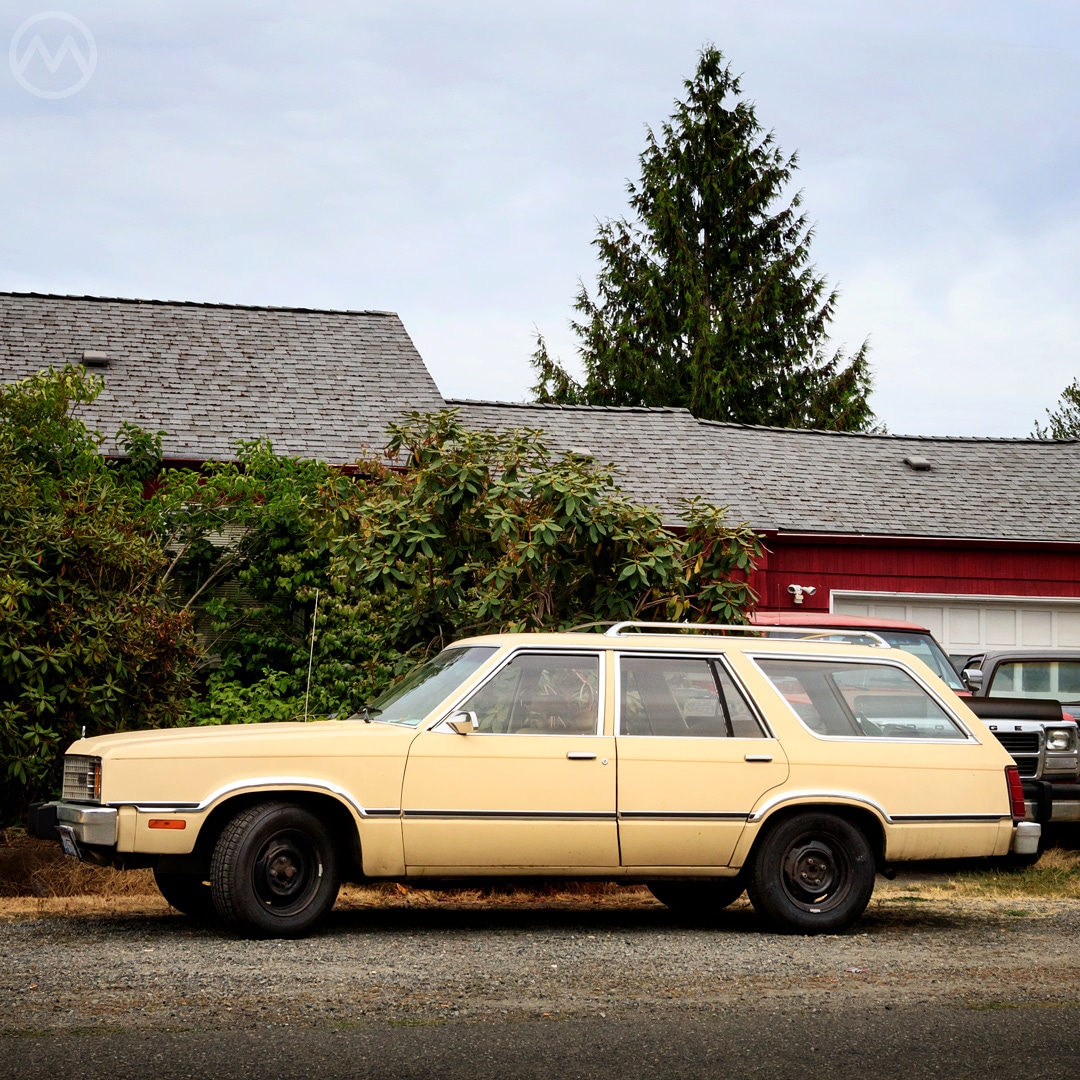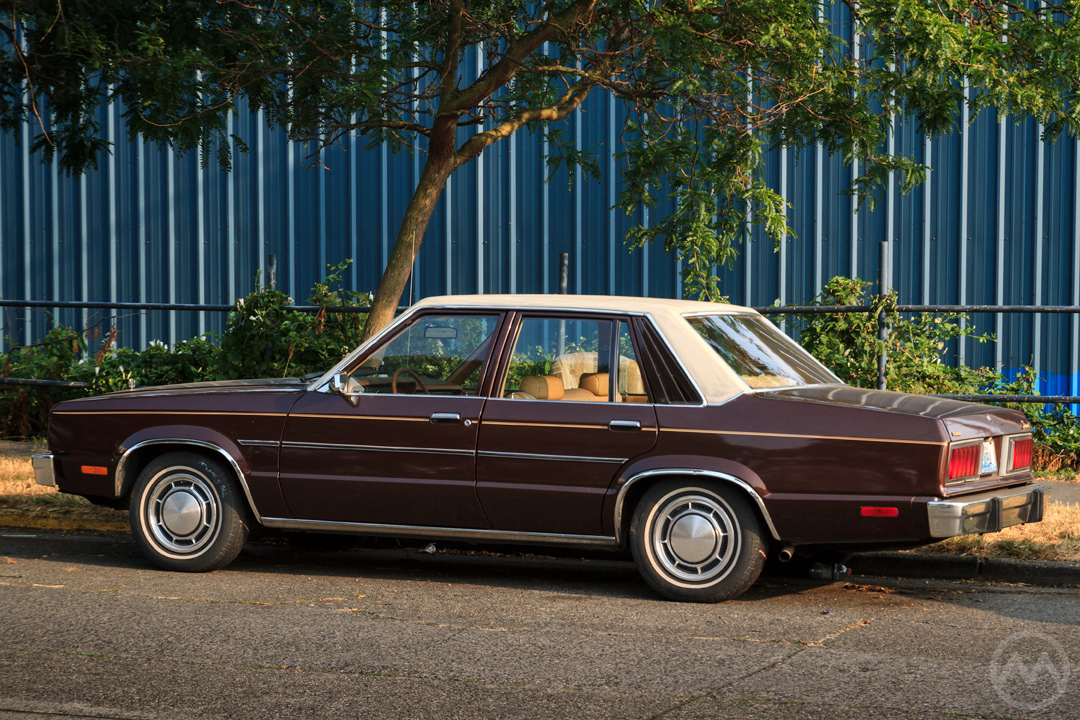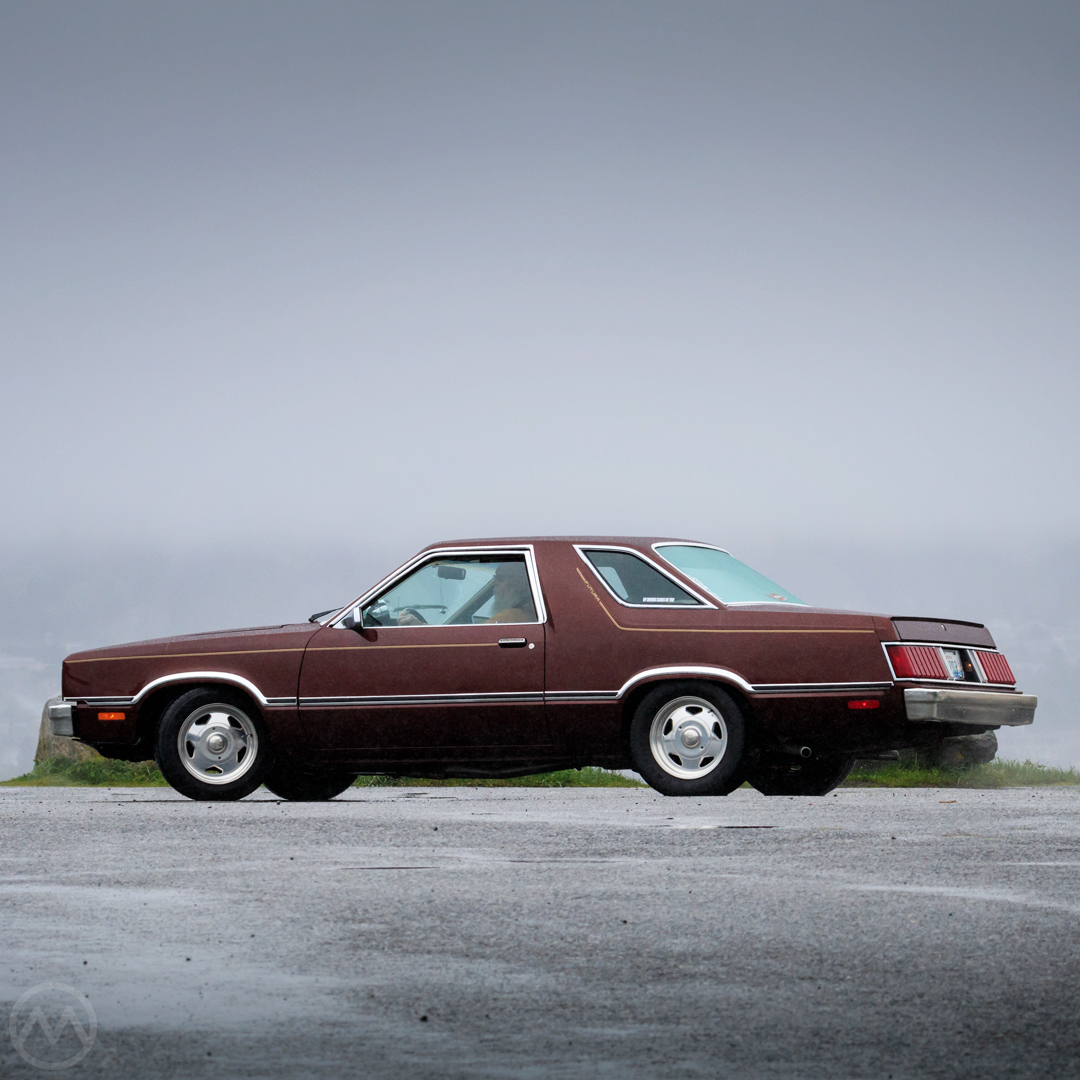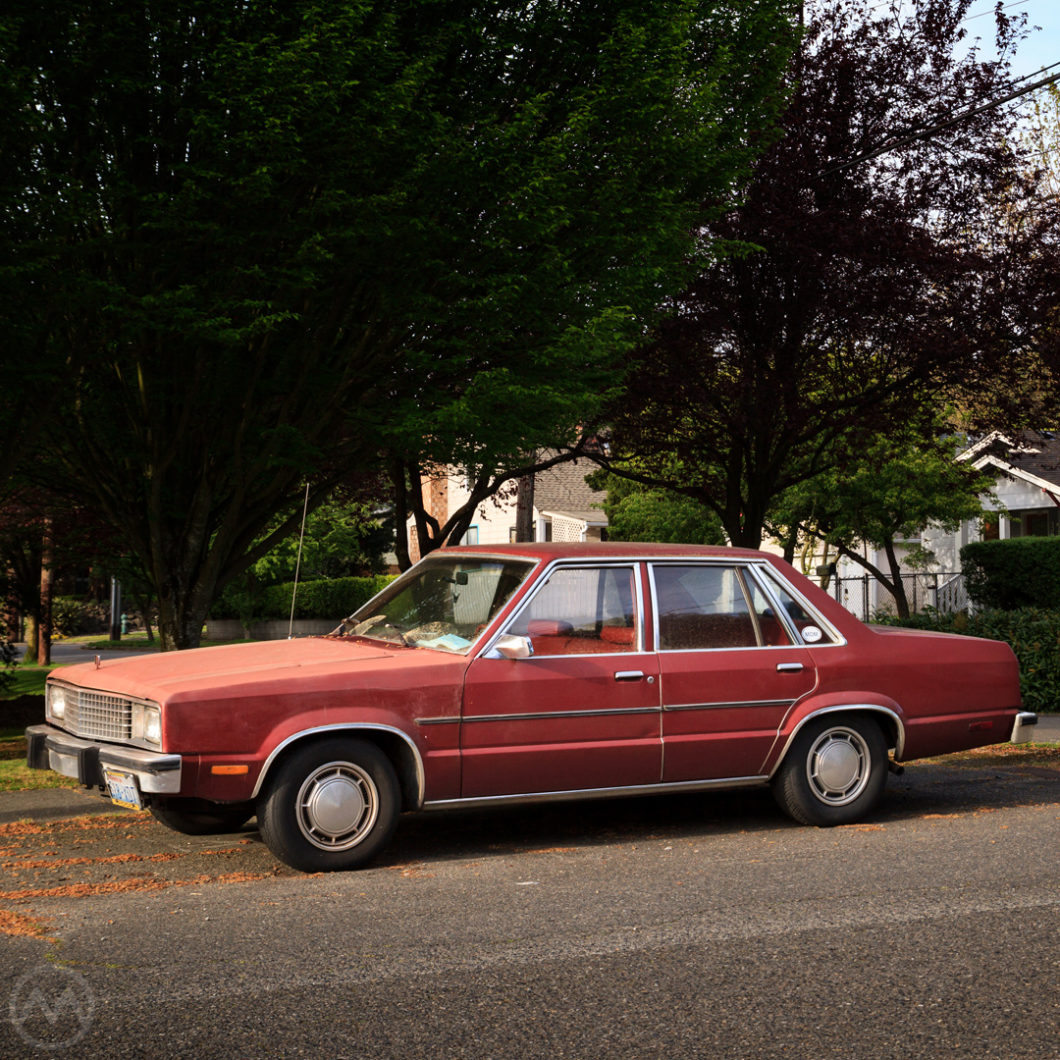The Ford Fairmont was Dearborn’s first “downsized” car. Unlike GM, Ford started at the middle of its lineup post-OPEC and worked outward. But like GM’s “Project 77” cars, what became the Fairmont actually started off before the 1973 OPEC 1 crisis.
Although the Fairmont was never sold outside of north America (though the name has been used elsewhere), it’s back story was actually an international cocktail.
Hal Sperlich, Ford’s leading advocate for smaller and more logical products, was tasked with finding a replacement for the small-to-medium vehicles that were still riding the old Falcon architecture – the Maverick and its Mercury cousin, the Comet.
That was in 1973, and by then Sperlich, a Detroit native, was a 16 year veteran of Ford and a familiar voice for new and smaller products. He’d played a key role in the development of the Mustang, another Falcon derivative, and was generally of the opinion that Ford needed “internationally sized” cars for the future.
At the time, the last member of the long-running and by then much-modified Falcon family – the 1975 (U.S.) Granada – was still in the offing. Sperlich’s project was called “Fox,” although at that stage just what the “Fox” would look like was pretty open ended.
International Flavors
A year earlier Sperlich and his boss and patron, Lee Iacocca, had gotten Henry Ford II to commit to one of Ford’s biggest and most ambitious ever projects – building the Mk1 Fiesta. At that time the Fiesta was not slated for U.S. sale, but getting HF II to approve the huge expenditures on such a tiny and unproven car was a big achievement.
The Fiesta would go on to be a market leader and a hugely profitable car for Ford, and Sperlich knew it would be a success early on.
Looking around at the European car market and watching as Americans were again choosing smaller, more sophisticated imported cars over Pintos and Vegas, he had equally ambitious plans for the “Fox.” Sperlich hought the “Fox” should be either a small, sophisticated front-driver, hopefully closely tied to the next Cortina/Taunus.
Why “Fox?” Supposedly because the Audi 80, sold in the USA as the Audi Fox, was the ideal target vehicle in the early stages.
The Audi was a relatively plain car but light, practical, and possessed of at least one Ford-like characteristic, its MacPherson strut front suspension. From an outsider’s perspective it looked competitive, efficient, and easy to manufacture – exactly what Ford wanted. Plus, it was a major competitor to Ford’s German Taunus TC, as Audis and DKWs had been during the era of the now-departed front-drive Taunuses.

Sharing tooling and engineering with the Cortina/Taunus or its next iteration would be a better investment than another (American) Granada. Meant as a successor to the Maverick, the Granada would be a popular car, but it aged quickly and in Sperlich’s eyes did not make Ford a product leader.
Very quickly though, it proved hard to meet all the different regulatory challenges of building one car for vastly different markets. Even if the cars would be different wheelbases and sizes, it was hard to get every piece to fit all those regulations. At one point, the “Fox” also included a smaller version to replace the Pinto as well, but that was quickly dropped.
Into this situation came OPEC, which blew a hole in Ford’s domestic profits and indirectly prolonged the life of the Maverick and brought the Fiesta to America. But that was still to come, and what happened next would shape Ford platforms for decades.
Fox on the Run
Henry Ford II’s response to OPEC was to sharply cut costs from development and extend the lives of two existing products – the Maverick and the Pinto.
The ambitious front-drive idea was abandoned. HFII wanted a traditional American replacement for the Maverick/Granada, even if it were smaller or more logical. He was not alone. Virtually all of Ford’s execs thought Sperlich’s advocacy for a costly front-driver was crazy at a time when the company was hurting for funds, including Iacocca.
Over in Europe, the very conservative rework of the Cortina and Taunus in 1976 was one outward manifestation of money saving. The Cortina and Taunus TC were good sellers, why spend the money on a costly reinvention when a big update would do? Ford was probably correct in this assumption as both Cortina and Taunus continued to sell very well into the 1980s.
After HFII decided that the Maverick/Granada successor would not be as small as the Cortina and not front-drive, Sperlich continued to advocate for his idea. HFII sacked him that same year.
The “Fox” project was already underway. Gail Halderman, who was in charge of styling the Fairmont, described the project as one of many battles, but many triumphs. He later lamented that Ford foolishly let Sperlich go. In 1985, he’d say that the goal of many projects around the time of the Fairmont was “just to hang on until front-drive.” Ironically, that was exactly what Sperlich was asking for in the first place.

Sperlich departed for Chrysler where he helped develop a sprawling line of front-drive cars that saved the corporation from certain doom. In a few years time, he dusted off another rejected Ford idea he’d advocated for – the Minivan.
In the meantime, work continued apace on the Fox. Ford’s ad copy in 1977, when GM downsized its large cars, touted the “road hugging weight” of its big cars, but the market did not lie – downsizing was met with wide acceptance. The Fairmont, Ford’s first stab at reducing sizes, was nearly ready.
Halderman later described the process as one of painful trial and error, balancing using less metal, fewer resources, and lighter components and also coping with some sort of aerodynamic advantages.
“Make it European.”
The decision to cut back on development would cost Ford very dearly – it took heavy losses from late 1979-1982 and wouldn’t recover until its front-drive conversion with the Escort, Tempo, and Taurus. Ironically, Halderman later said, after Iacocca was also dismissed in 1978, Ford’s managers started to demand that the domestic design staff “copy the things that were successful in Europe.”
At that time, Ford of Europe was providing most of the profit in the company, so perhaps that isn’t so surprising. Several Ford of Europe execs were also transferred to Dearborn at the time including Bill Bourke, formerly an exec at Ford of Australia, and Robert Alexander.
The Fox platform design, meant for sedans, would also do double duty in replacing both the Mustang II and the European-sourced Capri in the USA. Another sign of budget restraints.
Former Ford of Australia and recent Ford of Europe design man Jack Telnack, well acquainted with Bourke and later Ford’s chief designer, headed up that part of the Fox design efforts.
Though limited and tested by time, CAFE requirements, and changing management, the designers made the most of what they had in this period, creating two excellent designs – the Fox and Panther platforms. The Fox came first, arriving in late 1977 as the Fairmont and it’s Mercury twin, the Zephyr.
The Fairmont Arrives
The Fairmont was quite a surprising product for an American car in 1978. It that it was plain and simple in an era of frippery and frills. Inside and out it was clean, simple, and easy to understand and repair.
Though an entirely new platform, it retained plenty of older hardware, just in a newer and more efficient package. It was as logical as it was popular, and totally unlike the Granada – which ran alongside the more slender Fairmont for another two years.
When the (American) Granada had debuted for 1975, it had been billed as a faux Mercedes. It was an LTD Brougham in miniature, filled with 1970s styling flourishes, fake wood, chrome trim, and optional luxury touches. Ads often referenced Mercedes models directly, though few were truly convinced – much of the Granada’s “Mercedes-like” touches were skin deep.
The Fairmont, in comparison, was far more like a Volvo 240 (to which it was similar in dimension and square-ness). Like the Volvo, what you saw was what you got, no pretenses. It was not ugly, but it was not meant to be trendy in sedan or wagon form. A sporty Futura Coupe used a roof treatment similar to the Thunderbird, and that was exciting as the Fairmont got.

It was the first U.S. Ford with MacPherson struts (though in a different arrangement than most European Fords or the Audi Fox) but the engines were all familiar fare.
Base Fairmonts used the 2.3L Pinto four, but many more were equipped with Fords’ 200-cid/3.3L “Thirftpower” straight six, a veteran of many Falcons, Mavericks, and Granadas. At the top of the range was the 302/5.0 V8, replaced by Ford’s smaller 255-cid/4.2L V8 in 1980.
The executive shuffling and HFII’s dismissal of both Iacocca and Sperlich was emblematic of managerial issues at Ford at the time, which weren’t really resolved until HFII stepped down in favor of Phil Caldwell. HFII stepped down in 1979, but Caldwell wasn’t in firm control until the spring of 1980.
Caldwell pursued exactly the kind of direction Sperlich had advocated. Caldwell, executive Don Petersen, and Red Poling, whom Caldwell brought over from Ford of Europe, would completely turn around Ford’s fortunes, culminating in the landmark Taurus.
In the meantime, they had to make due with what they had. The new Panther cars, launched for 1979, were hit hard by the 1980 recession but would eventually recover. The Fox, meanwhile, was what was on hand. By 1982, the Fox architecture was underpinning seven models across all three car divisions, with the newest one from Lincoln.
The Fairmont ran into 1982 but continued with a modest restyle as the LTD from 1983 to 1986. During this time, Ford continuously updated the Fox as it prepared the Taurus to replace the Fox-body mainstream cars.
After the Escort/Lynx, Tempo/Topaz, and Taurus/Sable, the Fox soldiered on under the Thunderbird (and its Lincoln/Mercury derivatives) and the Mustang for a long time after. The last new car built on the old bones (much modified by then) was the SN-95 Mustang from 1993-2004.


Pingback: 18 carros clássicos baratos para comprar hoje